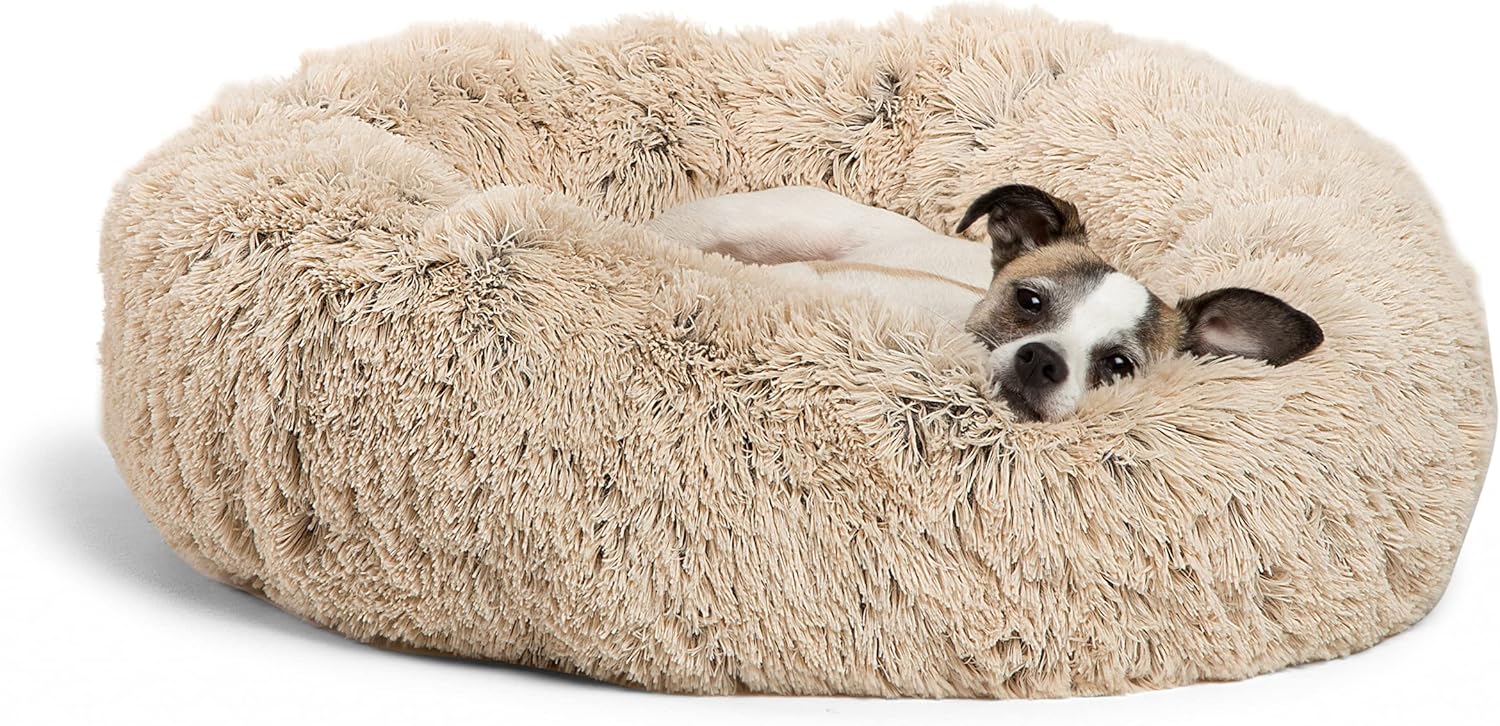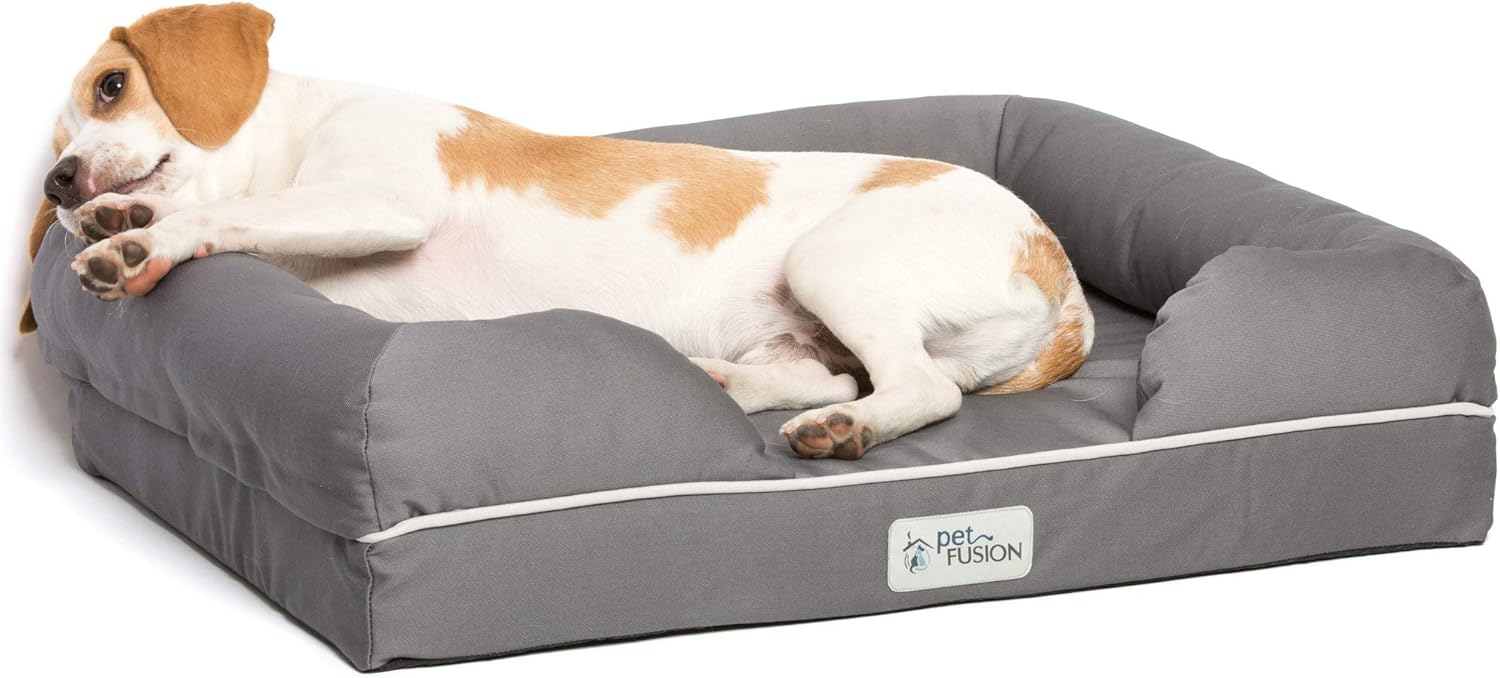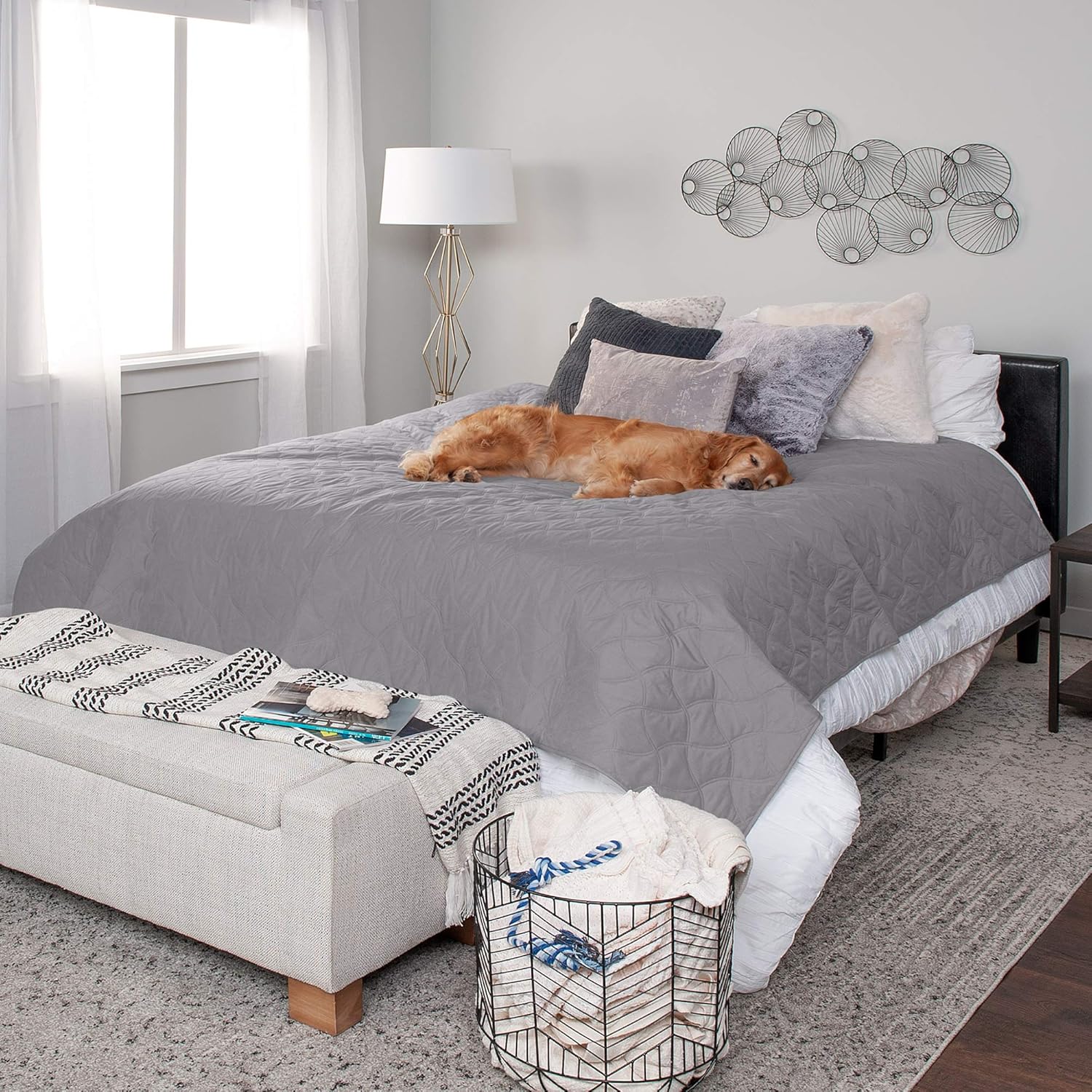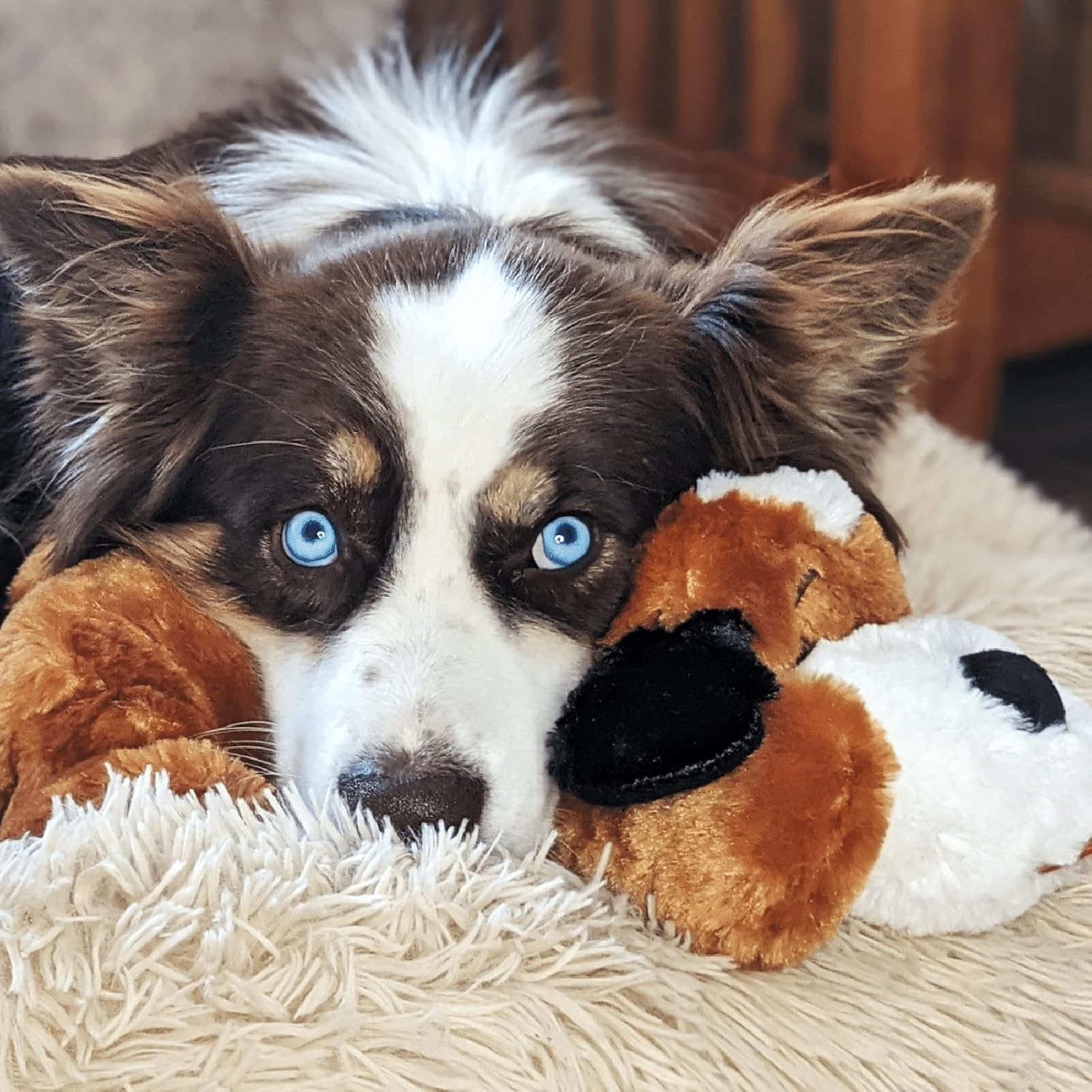Key Points of Understanding Your Dog’s Sleeping Habits:
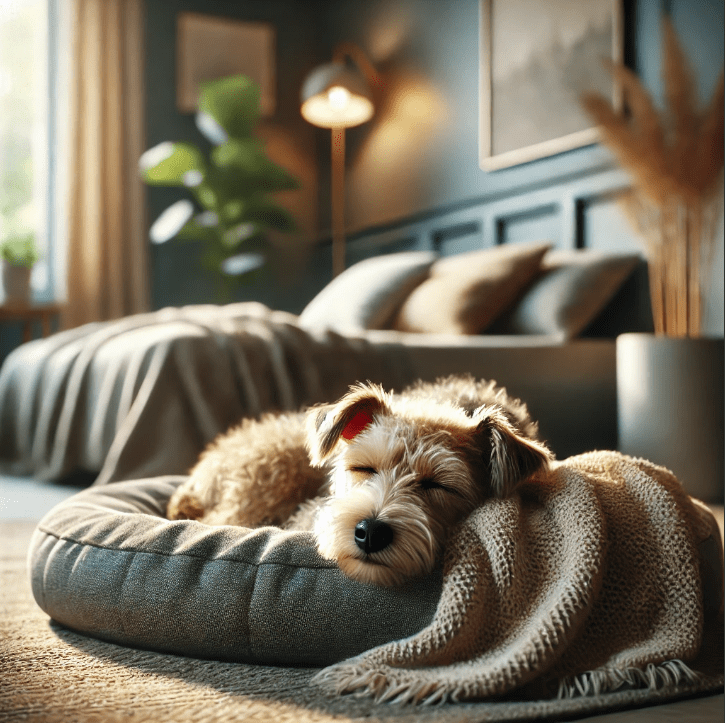 |
Key Points
|
| Understanding your dog’s sleeping habits is vital for their health and happiness. Dogs sleep differently than humans, with fragmented cycles that include light, deep, and REM sleep. The amount of sleep varies by age, breed, and activity level—puppies and senior dogs need more rest, while active adult dogs may sleep less. Factors like diet, exercise, and environment impact sleep quality, and changes in patterns, such as excessive sleeping or restlessness, may indicate health concerns.
By providing a comfortable sleeping space, maintaining routines, and ensuring physical and mental stimulation, you can help your dog enjoy restful and healthy sleep. |
|
The Sleep Cycle of a Dog
Dogs have a sleep cycle that is quite different from that of humans. While humans typically have long periods of deep sleep followed by lighter sleep stages, dogs’ sleep cycles are shorter and more fragmented. On average, dogs sleep between 12 to 14 hours a day, though this can vary depending on factors such as age, breed, and lifestyle.
Stages of Sleep
- Light Sleep: During light sleep, your dog’s body is still somewhat alert. They may twitch or even bark in their sleep during this phase. Light sleep accounts for about half of your dog’s sleeping time.
- Deep Sleep: In deep sleep, your dog’s body fully relaxes. This is when most of the physical restoration happens, allowing muscles to repair and the immune system to strengthen.
- REM Sleep: REM (Rapid Eye Movement) sleep is the stage in which dogs dream. You’ll notice your dog’s eyes moving rapidly under their eyelids, and they may exhibit behaviors such as barking, whining, or twitching. REM sleep is essential for maintaining mental and emotional well-being.
Age and Sleeping Patterns
Dog Sleep Patterns by Age
| Age Group | Average Hours of Sleep per Day | Sleep Pattern and Behavior |
| Puppies (0-6 months) | 18-20 hours | Frequent naps, interspersed with bursts of high energy. Rapid development requires lots of sleep. |
| Adolescent Dogs (6-12 months) | 14-16 hours | Sleep patterns begin to stabilize, but energy levels are still high. They require sufficient sleep to support learning and growth. |
| Adult Dogs (1-7 years) | 12-14 hours | Consistent sleep routine with nighttime sleep and daytime naps. Their sleep needs vary depending on breed, size, and activity level. |
| Senior Dogs (7+ years) | 16-18 hours | Seniors sleep more due to decreased activity levels and potential health issues. Sleep may be more fragmented, with more frequent naps. |
Why Do Dogs Sleep So Much?
It might seem like dogs always sleep, but this is completely normal. Dogs are polyphasic sleepers, meaning they sleep multiple times throughout the day rather than having one long sleep like humans. Here are some key reasons why dogs sleep as much as they do:
- Energy Conservation: Dogs need to conserve energy for bursts of activity like playing, hunting, or working. Even if your dog isn’t chasing squirrels, their natural instincts drive them to rest frequently.
- Breed-Specific Sleep Needs: Some breeds, especially those bred for working, tend to sleep less, while larger breeds like Great Danes or Mastiffs are notorious for their long naps.
- Daily Activity Level: Dogs with a very active lifestyle might sleep more to recover from physical exertion, whereas a dog with a sedentary lifestyle may sleep out of boredom.
- Health Conditions: Conditions such as obesity, thyroid problems, and diabetes can affect your dog’s sleep patterns. If your dog experiences a sudden change in sleeping more or less than usual, it’s wise to consult a vet.
What’s Considered Normal?
Understanding what’s normal for your dog is the key to recognizing when something might be wrong. A healthy adult dog generally sleeps 12-14 hours daily, broken into naps throughout the day and a longer sleep at night.
Factors Affecting Sleeping Habits
- Diet: Proper nutrition plays a huge role in your dog’s energy levels. A poor diet can make your dog lethargic, leading to more sleep.
- Exercise: Dogs that get enough physical and mental stimulation during the day tend to have more restful sleep. Lack of exercise can lead to excessive sleeping due to boredom.
- Environment: The environment where your dog sleeps can also affect how well they rest. A comfortable, quiet, and secure sleeping area will promote better sleep.
Signs of Healthy Sleep Patterns
- Relaxed Body Posture: A relaxed body, with limbs outstretched or curled in, indicates your dog is sleeping soundly.
- Consistent Naps: Regular short naps throughout the day are normal.
- Waking Up Alert: When your dog wakes up, they should appear refreshed, alert, and ready to engage.
Understanding Common Sleeping Positions
Just like humans, dogs have different sleep positions that can give insight into their comfort level and personality. Here’s what some of those positions might mean:
| Sleeping Position | Description | Meaning |
| Curled Up (Donut Position) | The dog curls up into a tight ball, often tucking their nose under their tail. | This position is common in dogs trying to conserve warmth or protect vital organs, signaling a need for security. |
| On Their Back (Belly Up) | The dog lies on their back with their paws in the air. | A sign of trust and security, as this is a vulnerable position. It’s also a way for dogs to cool down. |
| Side Sleeping | The dog sleeps on their side with its legs stretched out. | This indicates that the dog is relaxed and comfortable in their environment. It’s a common position for deep sleep. |
| Sprawled Out (Superman Position) | The dog lies with their belly on the ground, and limbs stretched out. | Common in puppies and high-energy dogs, this position allows them to jump up quickly if needed. |
| Cuddled Up Against You | The dog presses against you while sleeping. | This shows affection and a desire for closeness, signaling trust and a strong bond with you. |
Dog Sleeping Positions When Sick or Not
The way your dog sleeps can change when they’re not feeling well. Here’s a quick guide to help you identify if your dog’s sleep position might indicate illness:
| Sleeping Position | Healthy Dog | Sick Dog |
| Curled Up (Donut Position) | Common and comfortable, helps retain warmth, shows a sense of security. | May indicate a need for comfort due to pain or discomfort. |
| On Their Back (Belly Up) | Indicates confidence, relaxation, and feeling safe. | Rarely seen if the dog is sick, as this position exposes the stomach, which sick dogs usually avoid. |
| Side Sleeping | Shows relaxation and deep sleep; very common. | May reduce in frequency if the dog is uncomfortable or in pain. |
| Sprawled Out (Superman Position) | Shows readiness to jump up quickly; common in active dogs. | If sick, the dog may struggle to stay in this position for long. |
| Hunched or Crouched Position | Uncommon in healthy dogs, usually seen when briefly resting. | Often seen in sick dogs, particularly when experiencing abdominal pain or discomfort. |
| Tight Ball with Head Tucked | Sometimes for warmth in cold weather; common in healthy dogs. | If frequent, could indicate discomfort or an attempt to protect sensitive areas. |
| Restless Position Changes | Common during light sleep or dreaming. | Frequent position changes may indicate discomfort, restlessness, or pain. |
When Should You Be Concerned?
While it’s normal for dogs to sleep often, certain changes in their sleep patterns can indicate underlying health issues. Here are some signs that should prompt a visit to the vet:
- Excessive Sleeping: If your dog suddenly starts sleeping much more than usual, it could be a sign of an underlying condition like hypothyroidism, depression, or infection.
- Restless Sleep: Dogs that constantly change positions, seem unable to get comfortable, or frequently wake up during the night might be experiencing discomfort, anxiety, or pain.
- Difficulty Waking Up: If your dog is difficult to rouse and seems disoriented upon waking, it could indicate a health issue, such as diabetes or neurological problems.
- Lethargy When Awake: If your dog remains lethargic and uninterested in activities even when awake, it could signal something is wrong.
Creating the Ideal Sleeping Environment
Ensuring your dog has a cozy and secure sleeping space to sleep is essential for supporting their overall well-being. Here’s how you can create an optimal sleep environment for your furry friend:
- Comfortable Bedding: Invest in a good-quality dog bed that suits your dog’s size and sleeping preferences. Orthopedic beds are particularly helpful for older dogs with joint issues.
- Quiet and Calm Area: Dogs sleep best in a quiet, calm environment. Ensure their bed is placed away from loud noises or high-traffic areas of the house.
- Temperature Control: Ensure the sleeping area is comfortable. Dogs may need extra warmth in colder climates, while a cool mat can help them sleep comfortably in hotter areas.
- Consistency: Dogs thrive on routine. Try to keep a consistent sleeping schedule and environment for your dog, as this will help them settle down more easily.
Tips for Encouraging Better Sleep
If you notice your dog isn’t sleeping as well as they should, or if they seem restless at night, here are a few tips that can help:
- Increase Daytime Activity: Ensure your dog gets enough physical and mental exercise during the day. A well-exercised dog is more likely to enjoy restful sleep.
- Establish a Bedtime Routine: Like humans, a bedtime routine can help signal to your dog that it’s time to wind down. Activities like a calming walk or a quiet grooming session can be part of this routine.
- Monitor Diet: Make sure your dog is eating a balanced diet. Avoid giving large meals right before bedtime, as it can lead to discomfort and disturb their sleep.
- Limit Distractions: Turn off bright lights and minimize noise in the area where your dog sleeps. If necessary, use white noise or calming sounds to help them relax.
- Consider Supplements: For dogs with anxiety or trouble sleeping, calming supplements with ingredients like melatonin or valerian root may help. Be sure to consult your vet before adding any supplements to your dog’s routine
Top Products for a Restful Sleep: Beds, Comforters, Toys, and More for Your Dog’s Ultimate Comfort
Conclusion: Understanding and Supporting Your Dog’s Sleep Needs
Understanding your dog’s sleeping habits is more than just recognizing how much they sleep; it’s about interpreting their behavior and knowing what they need to feel safe and comfortable. Sleep is vital for your dog’s physical health, emotional well-being, and energy levels. Observing their sleep patterns, creating a comfortable sleep environment, and promptly addressing any health concerns can help ensure your dog gets the rest it needs to lead a happy and active life.
In summary, sleep is as essential for dogs as it is for humans. Paying attention to your dog’s sleep habits offers valuable insights into their health and overall happiness. If you ever notice significant changes in their sleep patterns, it’s advisable to consult with a veterinarian to identify and address any potential underlying issues. With proper care, your dog can enjoy restful sleep, helping them stay vibrant and full of life.
By breaking down the reasons behind different sleeping behaviors and what they indicate, you can better cater to your dog’s needs and ensure that they are always well-rested and ready for whatever adventures life may bring.




